Here are a few more interesting facts about cotton. There are about 50 varieties of cotton but only about 4 -5 are cultivated.

Upland Cotton
Gossypium hirsutum, known as Upland Cotton or Mexican Cotton, is the most widely planted species of cotton in the United States, constituting some 95% of all cotton production and is native to Central America and possibly Mexico Worldwide, the figure is about 90% of all production for this species.(from Wikipedia)
Gossypium arboreum, commonly called tree cotton, is a species of cotton native to India and Pakistan and other tropical and subtropical regions of the Old World. There is evidence of its cultivation as long ago as 2000 BC by the Harappan civilization of the Indus Valley for the production of cotton textiles. This species of cotton was introduced into East Africa by about 2000 years ago, and was grown by the Meroe civilization in Nubia, the first cotton weavers in Africa. ( from wikipedia)

Levant Cotton
Gossypium herbaceum, also called Levant cotton, is a species of cotton native to the semi-arid regions of sub-Saharan Africa and Arabia where it still grows in the wild as a perennial shrub. It was probably first cultivated in Ethiopia or southern Arabia and from there, cultivation spread to Persia, Afghanistan, Turkey, North Africa, Spain, Ukraine, Turkestan and finally, to China. It was first cultivated in China by about 600 AD.(wikipedia)
Pima cotton (Gossypium barbadense), also known as extra long staple, South American, Creole, Sea Island, or Egyptian cotton, is a species of cotton plant. It is a tropical, frost-sensitive perennial plant that produces yellow flowers and has black seeds. It grows as a small, bushy tree and yields cotton with unusually long, silky fibers. To grow, it requires full sun and high humidity and rainfall.
There are even variations of these that manufactoring changes like shiny cotton. Shiny cotton is a processed version of the fiber that can be made into cloth resembling satin for shirts and suits. I do have sheets like this as well. However, it is hydrophobic (does not absorb water easily), which makes it unfit for use in bath and dish towels (although examples of these made from shiny cotton are seen).
The term Egyptian cotton can be confusing. The term Egyptian cotton refers to the extra long staple cotton grown in Egypt and favored for the luxury and upmarket brands worldwide. Egyptian cotton is more durable and softer than American Pima cotton, which is why it is more expensive. Pima cotton is American cotton that is grown in the southwestern states of the U.S. However not all Egyptian cotton is created equal thread count is important but the quality of the cotton and how it is processed play a large role in the comfort and durability of the cotton. Here is a link to quick shopping guide for sheets.
I dyed my punis in bright green direct dyes from Cushings.
Of course the dye didn’t penetrate the middle. I soaked the punis for a few hours with a bowl holding them underneath the water. Then put them in the dyepot for about 2 hours.
Spinning the punis was interesting as the fiber is really short. I tried 3 ways.
1. I spun the puni just as it was no drafting except to make a smoother yarn during spinning. That didn’t work out too well. I had quite a few breaks and alot of stopping and starting it created a super lumpy yarn. With the color all in one area.
2. I drafted out the length of the puni and spun that way. It resulted in less breakage but still really lumpy yarn. Still resulted in most of the color being altogether.
3. I unrolled the puni and then drafted mixing the dyed areas with the undyed areas. This worked alot better. The resulting yarn was more uniform and the color was blended in.
Tags: ancient cotton, animal rescue, animals rescue maine, cotton, cotton fiber, cotton history, fiber animals, fiber processing, spinning cotton, spinning fiber roving, spinning fleece, types of cotton, vegan spinning fiber, vegan spinning wool, vegetarian spinning fibers, wool for sale, wool for spinning for sale
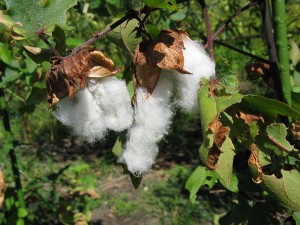
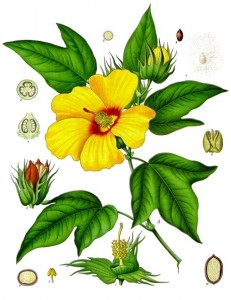
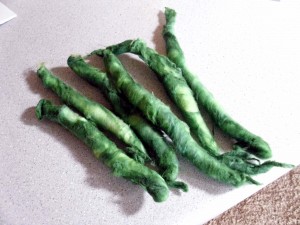
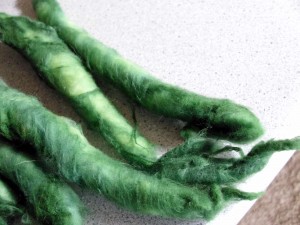
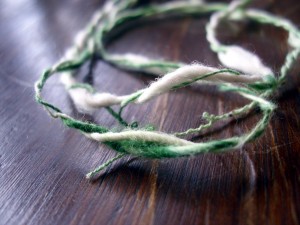
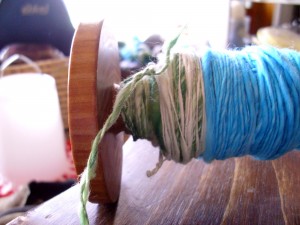
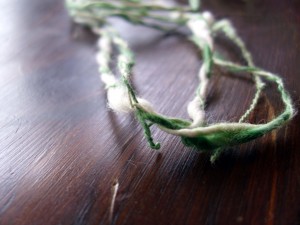
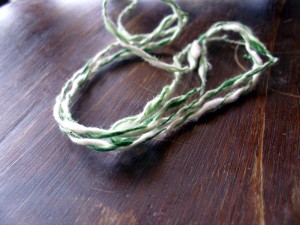










where to buy Gossypium Herbaceum fiber?
The best place I know to buy the any kind of cotton is Cotton Clouds….. http://www.cottonclouds.com/sh.....;panelID=6